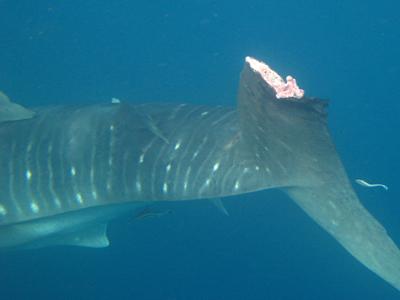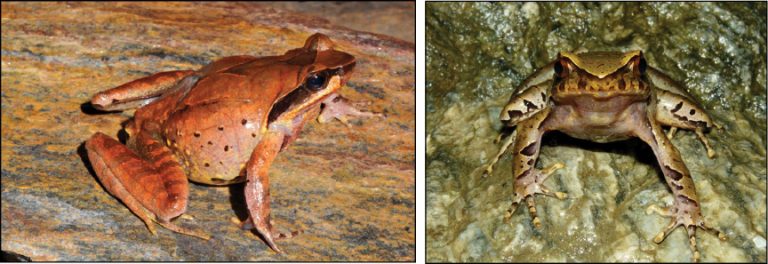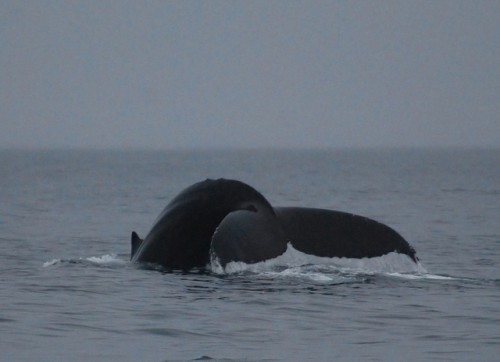A new study has for the first time explored the extraordinary rate at which the world’s largest fish, the endangered whale shark, can recover from its injuries. The findings reveal that lacerations and abrasions, increasingly caused through collisions with boats, can heal in a matter of weeks and researchers found evidence of partially removed dorsal fins re-growing.
This research, published in the journal Conservation Physiology, comes at a critical time for these large sharks, that can reach lengths of up to 18 m. Other recent studies have shown that as their popularity within the wildlife tourism sector increases, so do interactions with humans and boat traffic. As a result, these sharks face an additional source of injury on top of natural threats, and some of these ocean giants exhibit scars caused by boat collisions. Until now very little was known about the impact from such injuries and how they can recover.
“These baseline findings provide us with a preliminary understanding of wound healing in this species” says lead author Freya Womersley, a PhD student with University of Southampton based at the Marine Biological Association, UK.
Observing Markings and Wounds
The unique spot markings of whale sharks allow researchers across the world to identify individuals and monitor regional populations. For this study, the research team examined photographs taken by citizen scientists, researchers and the whale shark tourism industry in two sites in the Indian Ocean where the sharks frequently gather, and used these markings to standardise between images. This method allowed the team to compare photographs to assess and monitor how individual wounds changed.
“By using our new method, we were able to determine that these sharks can heal from very serious injuries in timeframes of weeks and months” says Freya. “This means that we now have a better understanding of injury and healing dynamics, which can be very important for conservation management.”
Read More: From Vulnerable to Endangered, Whale Sharks Closer to Extinction
The study also highlighted two interesting things that have been observed for the first time in the species.
1. They have the capability to re-grow an amputated organ.
2. The unique spot markings form again over previously injured spots, showing the feature is important for the species.

These healing capabilities suggest that whale sharks may be resilient to impacts caused by humans, but the authors note that there may be many other less recognisable impacts of injuries to these animals, such as reduced fitness, foraging capacity and altered behaviours; so injuries need to be prevented where possible. They also found variation within healing rates, with lacerations, typical of propeller injuries, taking longer to heal than other kinds of wounds, highlighting the need for further research to determine the influence of environmental and more nuanced individual factors on injury healing.
Careful management of whale shark aggregation sites, which occur seasonally at a number of coastal regions around the world, is essential to ensure the sharks are protected while spending time in areas of high human activity. If sharks are encountered with injuries in these locations, research such as this can help local teams estimate how old the injury is and make assessments about where and how it might have been inflicted based on knowledge of whale shark movements and tendency to return to the same locations.
Freya concludes, “Whale sharks have been experiencing population declines globally from a variety of threats as a result of human activity. Therefore, it is imperative that we minimise human impacts on whale sharks and protect the species where it is most vulnerable, especially where human-shark interactions are high.
“There is still a long way to go in understanding healing in whale sharks, and in shark species in general, but our team hope that baseline studies such as this one can provide crucial evidence for management decision makers that can be used to safeguard the future of whale sharks.”
Read More: Whale Shark Pups Pay the Price of Damaged Nets
Article based on News and Research by University of Southampton








